Maintaining balanced blood sugar levels is crucial for overall health, especially for individuals managing diabetes or insulin resistance. Surprisingly, a diverse range of foods can aid in this endeavor, thanks to their shared characteristic: a low glycemic index. These foods release glucose slowly and steadily into the bloodstream, preventing spikes. From fruits to grains, these 31 foods all contribute to stabilizing blood sugar, showcasing nature’s incredible variety and the power of nutrition.
Apples

An apple a day might keep blood sugar spikes at bay. Packed with soluble fiber, apples help stabilize blood sugar levels by slowing the digestion of sugars. Their low glycemic index means they release energy steadily, preventing sudden spikes. Eaten fresh, they provide a refreshing crunch and sweetness that satisfies without overwhelming the pancreas. Apples are versatile, enjoyable raw, baked, or stewed. Their natural sweetness pairs well with savory dishes too. Whether it’s a crisp Granny Smith or a juicy Red Delicious, apples make a convenient, portable snack for blood sugar control.
Oats
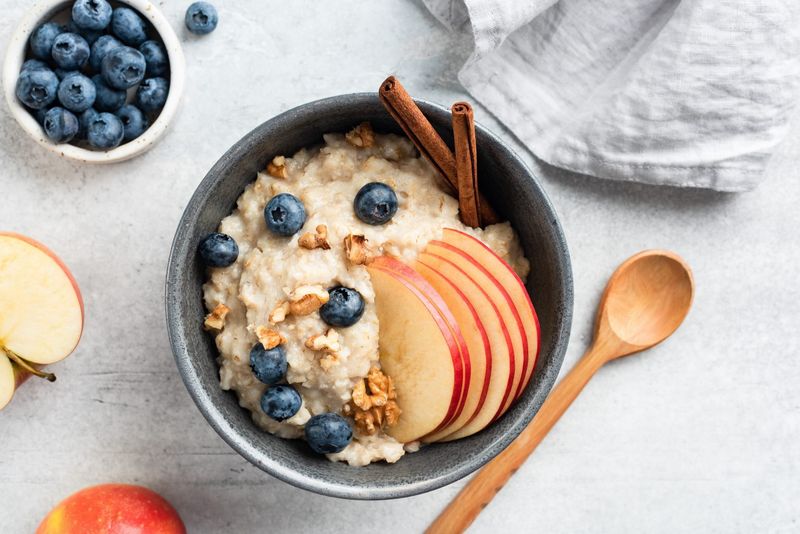
Start your day with a bowl of oats to keep your blood sugar levels in check. Oats are rich in beta-glucan, a type of fiber that slows glucose absorption. This ensures a gradual release of energy, keeping you full longer and preventing blood sugar fluctuations. Their creamy texture and neutral flavor make oats a versatile base for both sweet and savory toppings. Whether you prefer overnight oats, a warm porridge, or baked oat bars, this whole grain is a heart-friendly way to manage blood sugar levels effectively.
Lentils
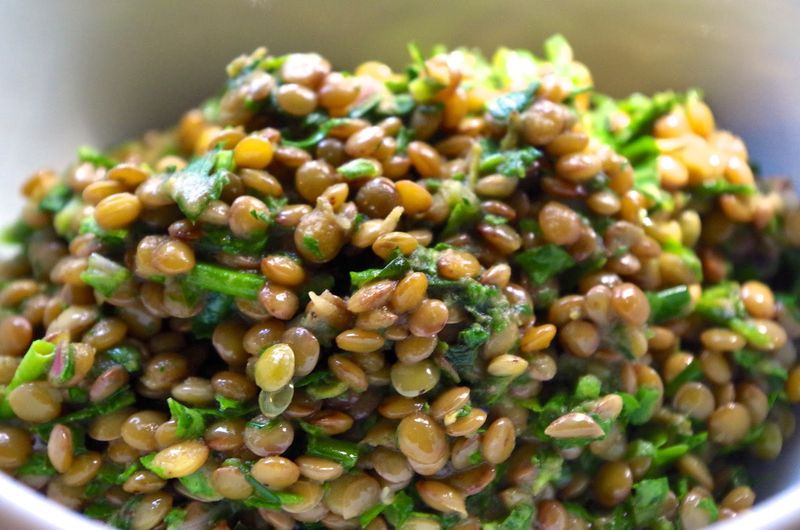
Lentils are little powerhouses when it comes to managing blood sugar. High in protein and fiber, they help slow the absorption of sugars into the bloodstream. This minimizes sugar spikes and provides a prolonged source of energy. Lentils come in various colors, each offering a unique flavor and texture. They’re perfect in soups, salads, or as a meat substitute in various dishes. Enjoy them in a spicy curry or a refreshing salad; lentils are both versatile and nutritious, supporting stable blood sugar levels all day.
Cinnamon
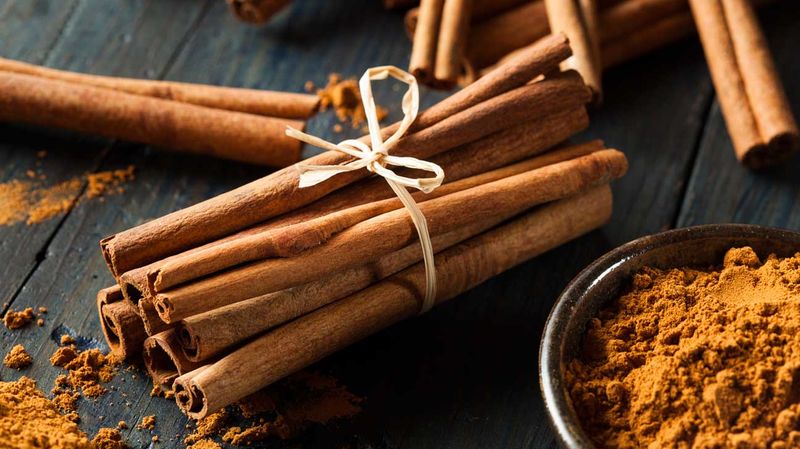
Cinnamon is more than just a spice; it’s a flavorful tool for blood sugar management. This aromatic bark contains compounds that enhance insulin sensitivity, aiding in blood sugar regulation. Adding a sprinkle to your coffee, oatmeal, or smoothie can enhance flavor while offering health benefits. The warm, sweet notes of cinnamon complement both sweet and savory dishes, making it a versatile addition to your pantry. Whether you’re enjoying it in baked goods or a spice rub for meat, cinnamon’s ability to support stable blood sugar is remarkable.
Almonds
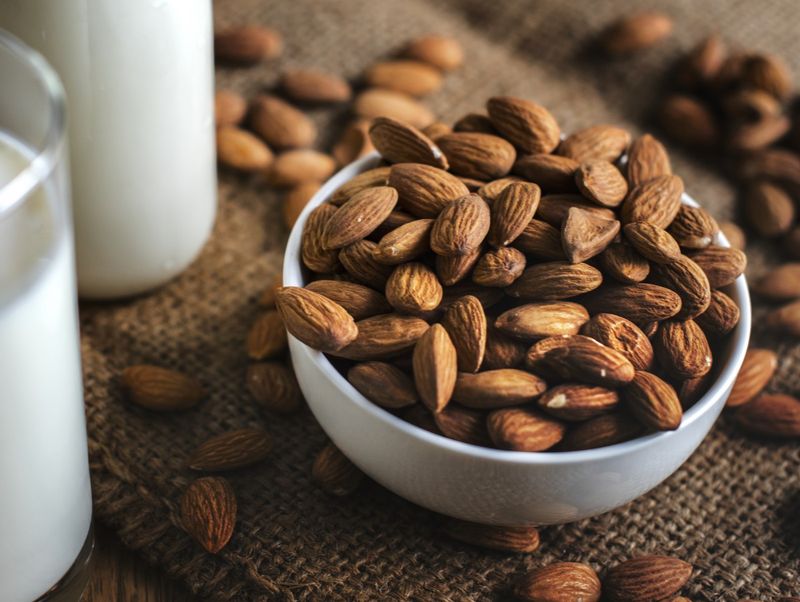
Nibble on a handful of almonds for a satisfying snack that supports blood sugar control. Rich in healthy fats, protein, and fiber, almonds help slow the absorption of carbohydrates, preventing spikes. Their crunchy texture and mild flavor make them a favorite among nuts. Enjoy them raw, roasted, or as almond butter. They’re a great addition to salads, yogurts, or as a topping for oatmeal. Whether you’re on-the-go or at home, almonds provide a convenient and nutritious option for maintaining balanced blood sugar levels throughout the day.
Chickpeas
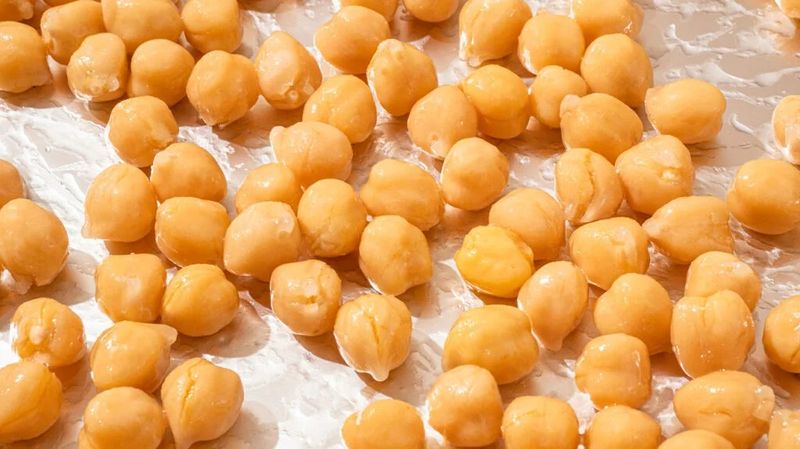
Chickpeas are not only delicious but also beneficial for blood sugar management. Packed with fiber and protein, they help regulate the absorption of sugars, providing a steady release of energy. These legumes can be enjoyed in various
Broccoli
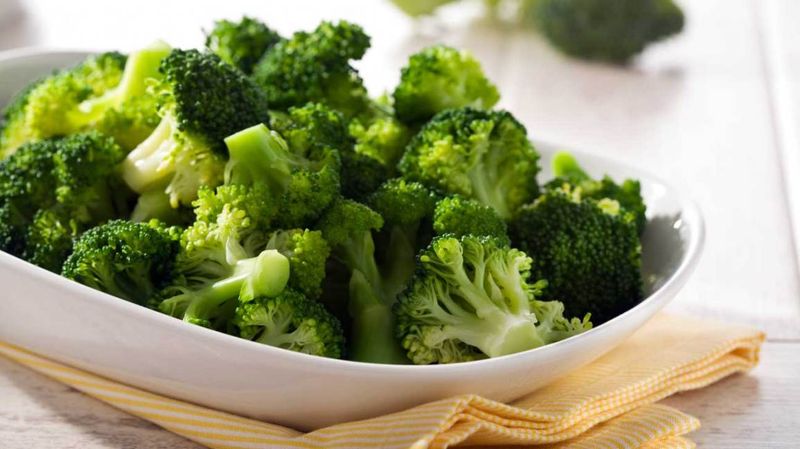
Broccoli, a cruciferous vegetable, stands out in the fight against high blood sugar. In its vibrant green florets lies sulforaphane, a compound known for its blood sugar-lowering properties. Its rich fiber content aids digestion, making it a staple in health-conscious diets.
Imagine a field of broccoli basking in the sunlight, each piece a tiny powerhouse of nutrition. This vegetable’s versatility allows it to be enjoyed steamed, roasted, or even raw, making it an easy addition to meals. Fun fact: Broccoli was once known as the “Italian asparagus” due to its popularity in Italy.
Search for lush broccoli landscapes or creative culinary uses to appreciate its full appeal and benefits.
Spinach
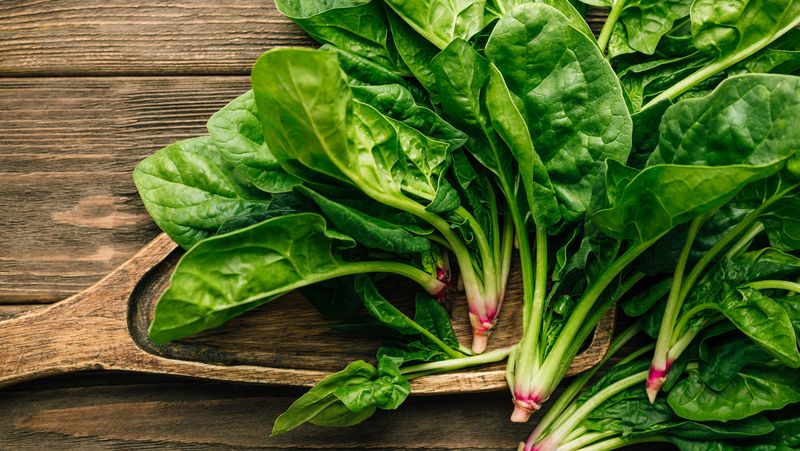
Spinach is more than just a leafy green; it’s a guardian of glucose levels. Its low glycemic index and high magnesium content help manage sugar levels effectively. The dark green leaves are packed with nutrients supporting overall well-being.
Picture a fresh bunch of spinach, with leaves shimmering in morning dew. They can be a delightful addition to smoothies, salads, or warm dishes. A playful twist: Remember Popeye? Spinach was his secret to strength, and it can be yours for blood sugar control!
Search for spinach’s visual charm and varied kitchen applications to discover its full potential.
Avocado
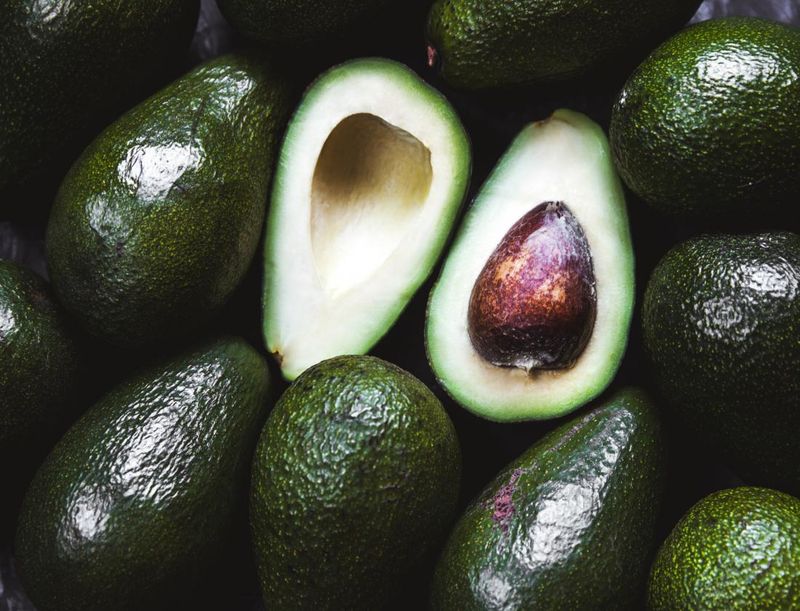
Avocado’s creamy texture isn’t just a treat for the palate; it’s a boon for blood sugar stability. Rich in healthy fats and low in carbohydrates, avocado helps maintain steady glucose levels while offering a satisfying richness.
Visualize the smooth surface of a ripe avocado, inviting you to indulge. It’s a versatile fruit that adds depth to salads, toast, or even smoothies. Its origin traces back to ancient Mexico, where it was cherished as “ahuacatl,” meaning testicle due to its shape.
Search for avocado’s culinary uses and historical significance to explore its health benefits.
Bitter Melon

Bitter melon, though not everyone’s favorite, is a champion in blood sugar regulation. This exotic fruit contains compounds that mimic insulin, thus reducing glucose levels efficiently. Its distinctive taste adds an adventurous twist to meals.
Envision a sliced bitter melon, its curious interior inviting exploration. While its flavor is an acquired taste, its health benefits are undeniable. Traditionally used in Asian cuisines, it offers a blend of culture and wellness.
Search for bitter melon recipes and regional dishes to experience its unique taste and benefits.
Turmeric

Turmeric’s golden hue brings more than color to the plate; it offers a natural way to manage blood sugar. Curcumin, its active compound, has anti-inflammatory and glucose-regulating properties. This spice transcends culinary uses, contributing to holistic health.
Imagine turmeric roots, vibrant and full of potential, ground into a fine powder. Beyond curries, turmeric can be enjoyed in teas and lattes. Did you know? In ancient times, turmeric was also used as a dye!
Search for turmeric’s culinary versatility and ancient uses to understand its full spectrum of benefits.
Garlic
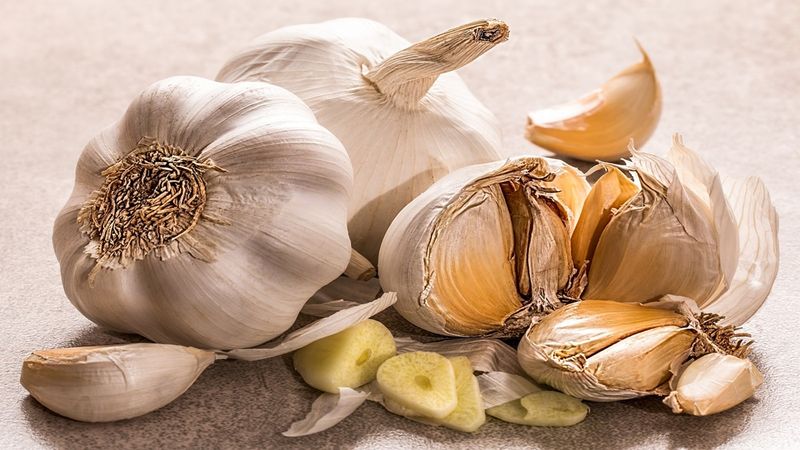
Garlic, with its pungent aroma, is a humble hero in blood sugar management. Allicin, a compound in garlic, enhances insulin sensitivity, making it a valued ingredient in healthy diets. Its versatility ensures it fits into various dishes.
Visualize garlic cloves, their papery skins peeled away to reveal nature’s potent treasure. Whether in a spicy stir-fry or a soothing soup, garlic’s role in health is as strong as its flavor. Fun tidbit: Ancient Egyptians revered garlic, even placing it in Pharaohs’ tombs.
Search for garlic’s culinary uses and historical significance to explore its full potential.
Chia Seeds

Tiny in size but mighty in impact, chia seeds are a powerhouse for blood sugar control. Their high fiber content slows glucose absorption, promoting stable blood sugar levels. These seeds can transform ordinary dishes into nutrient-rich delights.
Picture a bowl of chia seeds, ready to be stirred into a creamy pudding or sprinkled over a vibrant salad. Their ancient roots trace back to Aztec warriors, who relied on chia for energy and endurance.
Search for creative chia seed recipes and historical uses to enhance your understanding of their health benefits.
Blueberries
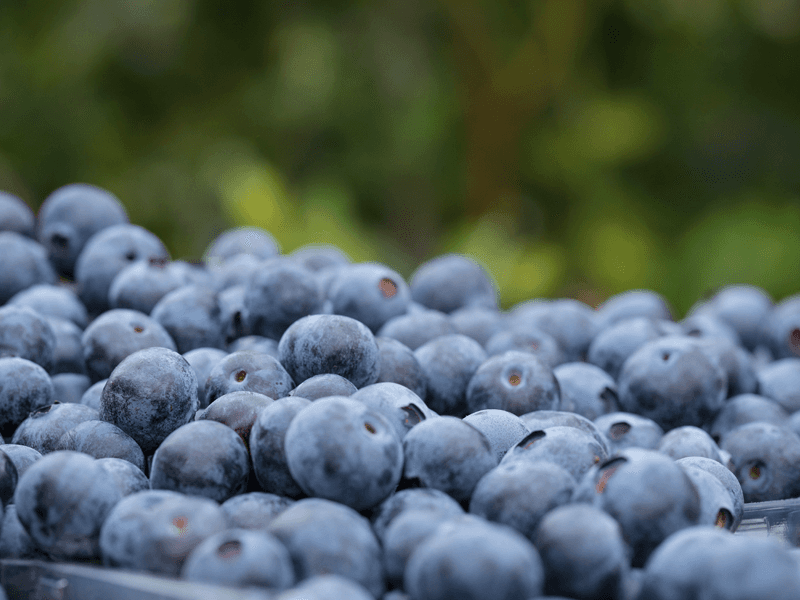
Blueberries, small yet powerful, are a sweet ally in managing blood sugar. Rich in antioxidants and soluble fiber, they help slow sugar absorption and reduce inflammation. Their natural sweetness is a delightful bonus.
Imagine a cluster of blueberries hanging from a bush, kissed by morning dew. They’re perfect in smoothies, on oatmeal, or simply as a fresh snack. Historically, Native Americans used blueberries for medicinal purposes and to dye fabrics.
Search for blueberry recipes and historical uses to appreciate their full health benefits.
Tomatoes

Tomatoes, often mistaken for vegetables, play a significant role in blood sugar regulation. Their low glycemic index and rich lycopene content contribute to better glucose management and overall heart health.
Visualize ripe tomatoes basking in the afternoon sun, their skins glistening with droplets. Whether in a salad, sauce, or soup, tomatoes add flavor and health benefits to any meal. Did you know? In the 16th century, tomatoes were called “love apples.”
Search for tomato recipes and historical significance to explore their nutritional value.
Quinoa
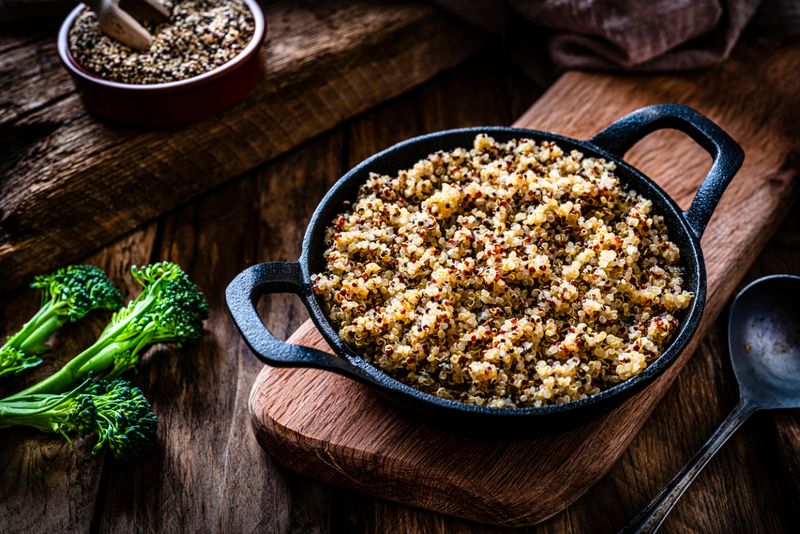
Quinoa, an ancient grain, is celebrated for its role in maintaining steady blood sugar levels. Its high protein and fiber content make it a satisfying alternative to traditional grains.
Picture a bowl of fluffy quinoa mingling with vibrant vegetables, creating a nutritious and hearty dish. This grain’s roots trace back to the Andean region, where it’s been a dietary staple for centuries.
Search for quinoa recipes and historical uses to understand its full range of benefits.
Walnuts
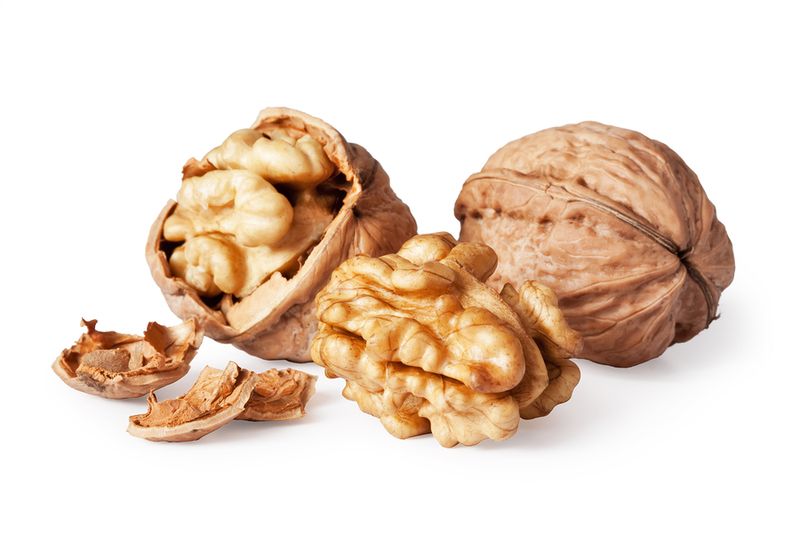
Walnuts, with their distinctive shape, offer more than just a satisfying crunch. They are rich in polyunsaturated fats and antioxidants, which help improve insulin sensitivity and lower blood sugar.
Visualize a handful of walnuts, their shells cracked open to reveal nature’s intricate design. Whether enjoyed as a snack or added to dishes, walnuts bring both flavor and health. Interestingly, ancient Romans associated walnuts with Jupiter, the king of the gods.
Search for walnut recipes and historical significance to discover their health benefits.
Cabbage
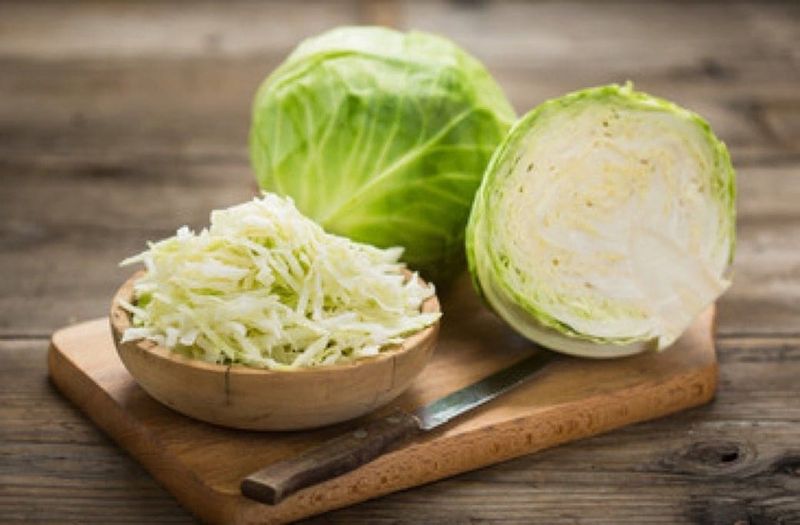
Cabbage, often underrated, is a hidden gem for blood sugar management. Its low calorie and high fiber content help regulate blood glucose levels effectively. This versatile vegetable can be enjoyed in a multitude of ways.
Imagine a head of cabbage, with its leaves fanned out like nature’s layered artwork. Whether fermented as sauerkraut or included in a warm stew, cabbage adds nutrition and flavor. Historically, ancient sailors used it to prevent scurvy on long voyages.
Search for cabbage recipes and historical uses to explore its full potential.
Zucchini
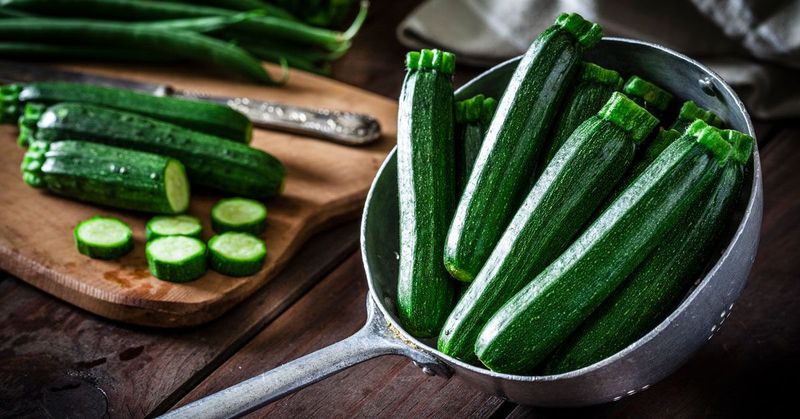
Zucchini, a summer squash, is more than just a low-calorie vegetable. Its low carb content and high water percentage make it ideal for blood sugar control. This versatile vegetable fits seamlessly into a variety of dishes.
Visualize a row of zucchinis, each one a testament to simplicity and health. From zoodles to casseroles, zucchini adapts to culinary creativity. Fun fact: Zucchini flowers are considered a delicacy in some cultures.
Search for zucchini recipes and unique uses to discover its health benefits.
Sweet Potatoes
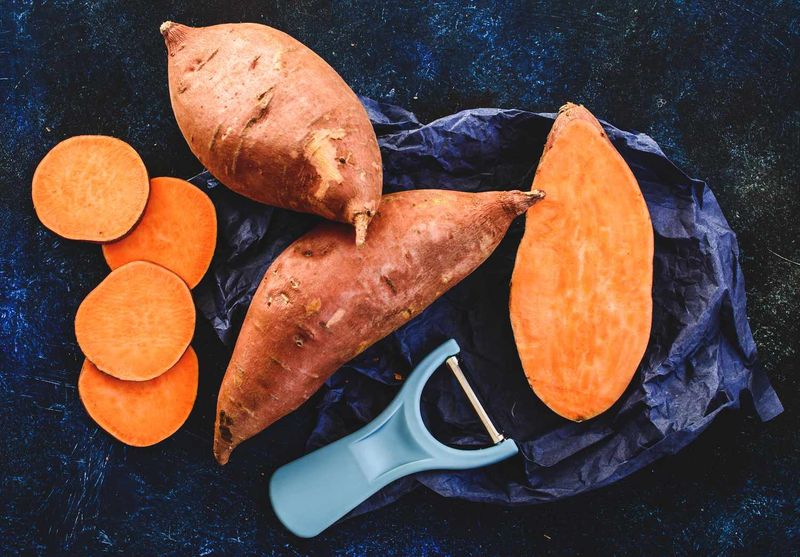
Sweet potatoes, with their natural sweetness, are a delightful way to manage blood sugar. Their high fiber content and low glycemic index contribute to stable glucose levels.
Picture sweet potatoes, their vibrant orange interiors promising nourishment. Whether baked, mashed, or in a pie, they offer versatility and flavor. Did you know? Sweet potatoes have been cultivated for thousands of years, with origins tracing back to Central and South America.
Search for sweet potato recipes and historical significance to understand their full range of benefits.
Pumpkin

Pumpkin, beyond its role in autumn décor, is a nutritious option for blood sugar control. Its high fiber and low-calorie content make it a satisfying addition to any meal.
Visualize a plump pumpkin in a garden, embodying the essence of harvest. Whether in soups, pies, or roasted dishes, pumpkin provides both flavor and health. Interestingly, pumpkins are native to North America and have been cultivated for over 7,500 years.
Search for pumpkin recipes and historical uses to explore its nutritional value.
Carrots
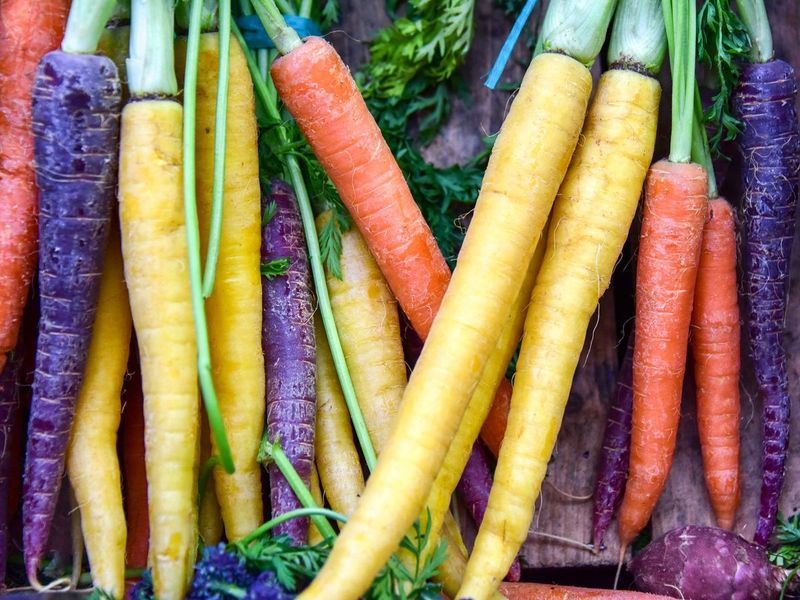
Carrots, with their vibrant hue, are more than just a crunchy snack. Their low glycemic index and rich beta-carotene content contribute to stable blood sugar levels and overall health.
Imagine a bunch of carrots, their green tops still intact, embodying freshness. Whether raw, roasted, or in a stew, carrots add both color and nutrients to any dish. Did you know? Carrots were originally purple, evolving to orange over time.
Search for carrot recipes and historical significance to enjoy their health benefits.
Bell Peppers
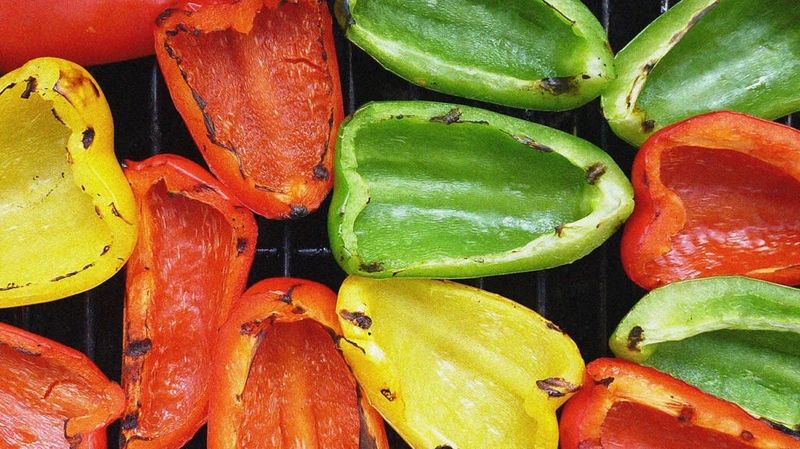
Bell peppers, with their vibrant colors, are a delightful addition to any diet. They’re low in carbohydrates and high in vitamins, making them ideal for blood sugar control. Their crisp texture and sweet flavor enhance dishes.
Visualize an array of bell peppers, each color offering a unique taste and benefit. Whether in salads, stir-fries, or stuffed, they add vibrancy and health. Fun fact: Bell peppers are the only member of the pepper family that doesn’t produce capsaicin, the compound responsible for spiciness.
Search for bell pepper recipes and unique uses to explore their full potential.
Strawberries
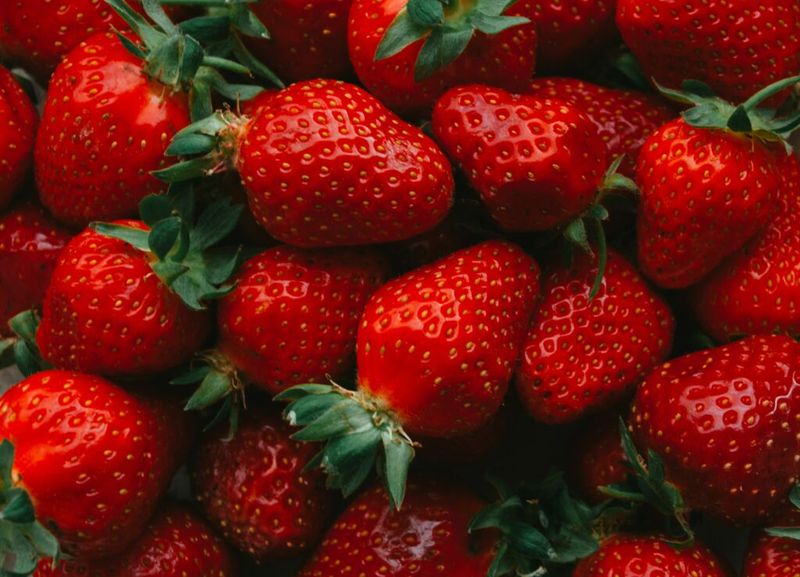
Strawberries, with their natural sweetness, provide more than just a tasty treat. Their high fiber and antioxidant content help regulate blood sugar levels and reduce inflammation.
Imagine a basket of strawberries, their red hues sparkling in the sun. They can be enjoyed fresh, in smoothies, or as a flavorful topping. Historically, strawberries have been associated with love and are often used in romantic desserts.
Search for strawberry recipes and historical uses to appreciate their health benefits.
Cauliflower

Cauliflower, often seen as a bland vegetable, is a secret weapon for blood sugar control. Its high fiber content and low carb count make it an excellent addition to low-glycemic diets.
Picture a head of cauliflower, its florets like clouds of nutrition. From cauliflower rice to creamy soups, this vegetable adapts to various dishes. Fun fact: Cauliflower was once considered a luxury vegetable, enjoyed by European nobility.
Search for cauliflower recipes and unique uses to explore its full benefits.
Peanuts
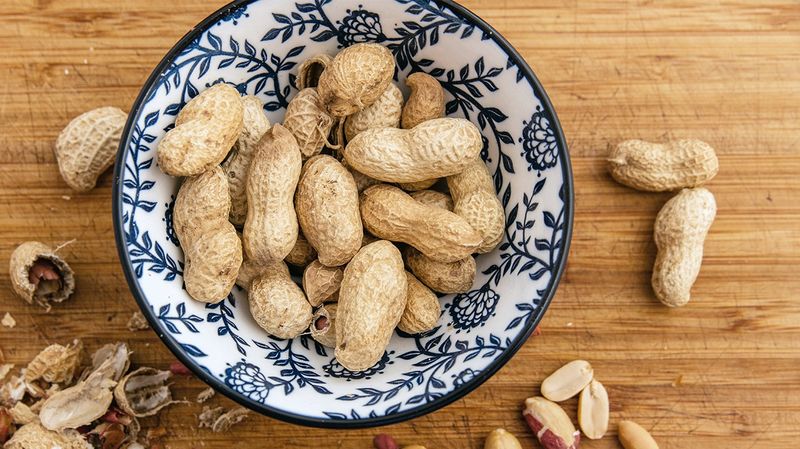
Peanuts, despite being a legume, are a popular snack that aids in blood sugar management. Their healthy fats and protein stabilize glucose levels and provide energy.
Visualize a bowl of peanuts, their shells inviting cracking. Whether as peanut butter, in a stir-fry, or simply roasted, they offer both flavor and health. Did you know? Peanuts were originally cultivated in South America and have been a staple in various cuisines for centuries.
Search for peanut recipes and historical significance to discover their benefits.
Pears

Pears, often overshadowed by other fruits, are a sweet solution for blood sugar control. Their high fiber content aids in slowing glucose absorption, making them a healthy choice.
Imagine a ripe pear, its surface glistening with dew, promising juicy sweetness. Whether enjoyed fresh, baked, or poached, pears offer a delightful taste and health benefits. Historically, pears have been cultivated for over 3,000 years, with origins in Asia and Europe.
Search for pear recipes and historical uses to enjoy their full potential.
Kale
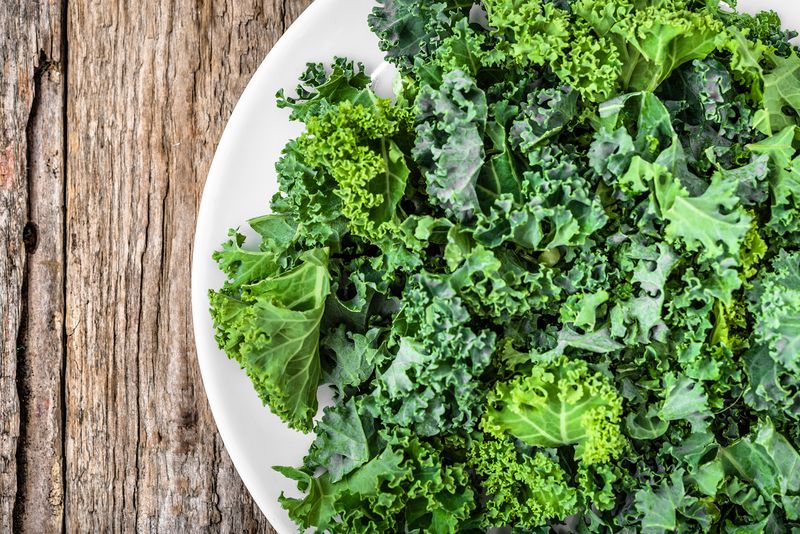
Kale, often hailed as a superfood, is a leafy green that supports blood sugar stability. Its low glycemic index and rich nutrient profile make it a cornerstone of healthy diets.
Consider a bunch of kale, its leaves vibrant and full of life, ready to be tossed into salads or smoothies. Kale’s popularity has roots in medieval Europe, where it was a staple winter vegetable.
Search for kale recipes and historical uses to explore its health benefits.
Green Tea

Green tea, a soothing beverage, offers more than relaxation. Its catechins, powerful antioxidants, support blood sugar regulation and enhance metabolic health.
Visualize a steaming cup of green tea, its aroma inviting tranquility. Whether enjoyed hot or iced, green tea provides a refreshing, health-boosting experience. Fun tidbit: Green tea’s origins trace back to China, where it was traditionally used in ceremonies.
Search for green tea benefits and cultural significance to appreciate its role in health.
Black Beans
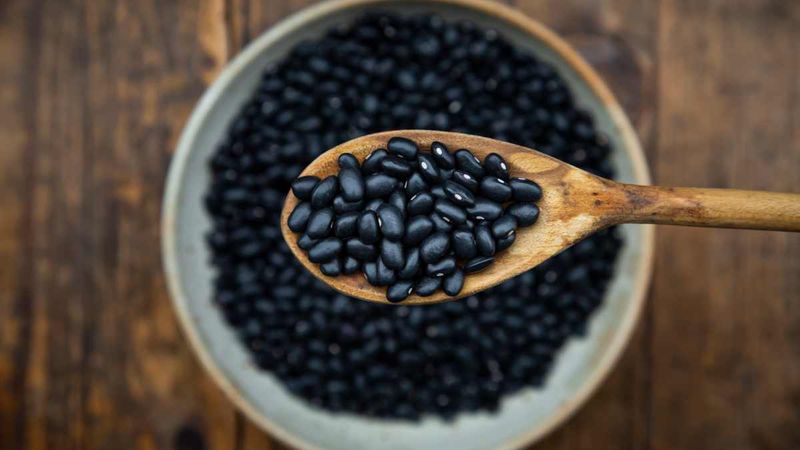
Black beans, with their hearty texture, are a staple in blood sugar-friendly diets. Rich in fiber and protein, they provide sustained energy and stabilize glucose levels.
Imagine a bowl of black beans, their glossy surface inviting a taste. From soups to burritos, black beans are a versatile addition to meals. Historically, they have been a key ingredient in Latin American cuisine.
Search for black bean recipes and historical uses to explore their benefits.
Asparagus
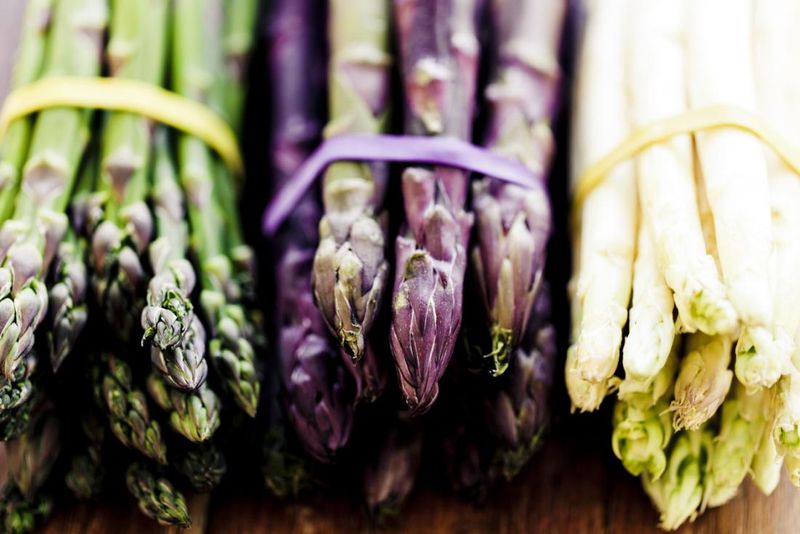
Asparagus, known for its unique taste, aids in blood sugar management through its fiber and antioxidant content. Its distinct flavor adds character to dishes while supporting health.
Visualize a bunch of asparagus, the dew on its spears reflecting the morning light. Whether roasted, grilled, or steamed, asparagus offers both taste and nutrition. Did you know? Asparagus was once considered an aphrodisiac by the ancient Greeks.
Search for asparagus recipes and historical uses to appreciate its full potential.
Leave a comment